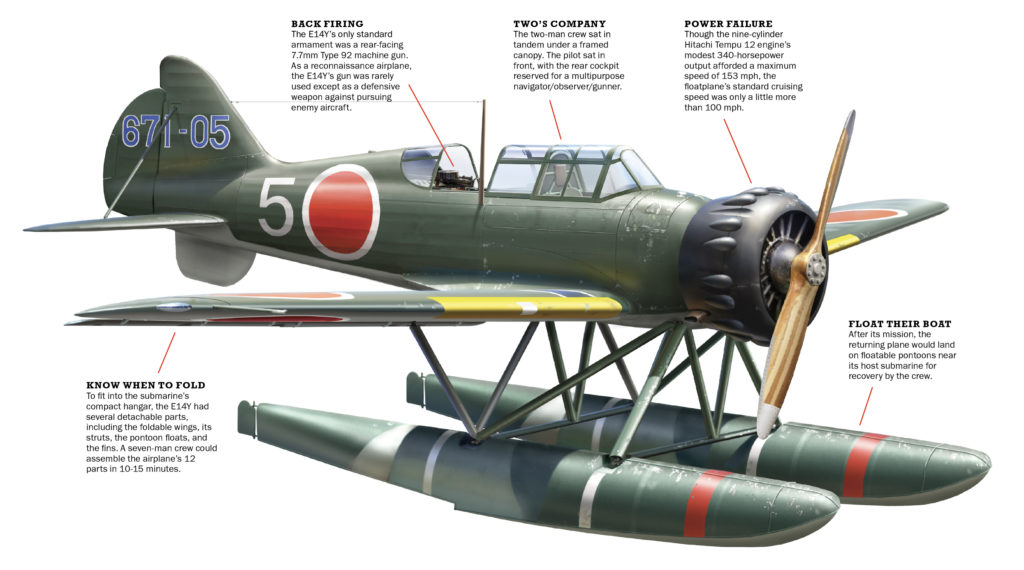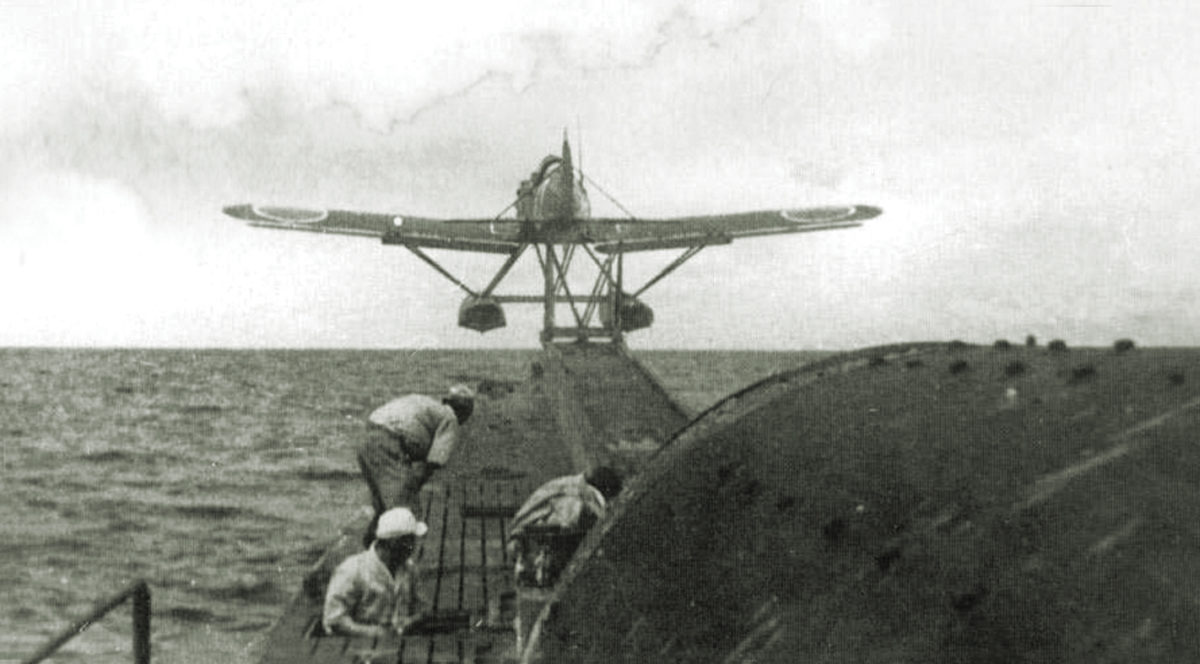Among the tools the Imperial Japanese Navy developed for its Type B-1 class of oversized cruiser submarines were small, stowable reconnaissance floatplanes to act as long-range eyes and ears. The Yokosuka E14Y was stored dismantled in watertight mini-hangars at the base of the Type B-1’s conning tower and, once assembled, launched from the front of the sub. The airplane’s slow speed made it an easy target if spotted by Allied ships or fighters, so its missions were usually conducted at night.

The E14Y carried out recon flights over Pearl Harbor (nine days after the main attack), Australia, New Zealand, Fiji, and the Aleutians, but its most famous mission was an expanded one on September 9, 1942, when IJN pilot Nobuo Fujita’s E14Y became the only enemy aircraft to bomb the mainland U.S. during the war. Fujita dropped two 168-pound incendiary bombs into Oregon’s Klamath Mountains in the hope it would ignite both a forest fire and widespread panic. It did neither.
The Japanese built 126 E14Ys from 1941-43. As the number of host subs in Japan’s fleet dwindled through wartime attrition, so did the E14Y’s opportunities.






